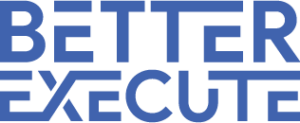Aligning incentives with business goals is a potent strategy that drives a company to achieve its targets by transforming team motivation into measurable outcomes. Syncing efforts and results cuts down friction, boosts engagement, and fosters a culture of ongoing improvement and sustainable growth.
Key Takeaways:
- Aligning incentives with business goals ensures everyone shares the same objectives, enhancing growth and performance.
- The BOS Framework structures strategies that harmonize employee efforts with the company vision.
- Identifying key performance indicators (KPIs) facilitates accountability and ownership, encouraging employees to contribute passionately to company goals.
- Challenging yet achievable goals within incentive programs significantly improve Total Shareholder Return (TSR) and employee motivation.
- Clear communication, regular feedback, and recognition are vital in supporting employee alignment with organizational goals.
Aligning incentives with business goals enhances both growth and performance. When teams see a clear connection between their efforts and tangible outcomes, it transforms motivation into measurable results. This alignment ensures that everyone is pulling in the same direction, propelling the company towards its objectives. Often, the disconnect between incentives and business goals causes friction, leading to diminished productivity and engagement.
Consider integrating the BOS Framework to effectively link incentives with your business objectives. The BOS Framework offers a structured approach to implement alignment strategies, ensuring employees’ efforts are in sync with the company’s vision. With well-aligned incentives, employees gain clarity on how their roles contribute to the larger goals and are more likely to pursue them passionately.
To maximize this alignment, identify key performance indicators (KPIs) that reflect both personal success and company progress. These indicators not only promote accountability but also foster a sense of ownership among employees. When your team clearly understands the milestones they need to achieve, they stay motivated and committed to reaching their targets.
By fostering an environment where incentives are mirrored by business aims, you cultivate a culture of continuous improvement and sustainable growth. With Better Execute’s guidance, businesses can tailor their strategies to achieve not just alignment but operational excellence.
Setting Challenging but Achievable Goals
Incentive programs often set goals at or above the midpoint of guidance, which many companies find crucial for growth. An impressive 59% of businesses opt for this approach, aiming to improve Total Shareholder Return (TSR). Companies setting more demanding targets typically see a TSR of 36%, compared to 30% for those with easier objectives. This difference underscores the value of pushing limits while maintaining realistic expectations.
Balancing challenging targets with realistic attainability is essential for keeping employees aligned and motivated. Striking the right balance ensures that targets inspire effort without becoming discouragingly out of reach. Employees feel more invested when they see goals as both demanding and achievable.
When setting goals, consider the following:
- Realism: Ensure targets are grounded in achievable outcomes, considering resources and market conditions.
- Feedback Mechanisms: Establish regular check-ins to provide feedback and adjust goals if necessary.
- Recognition: Celebrate milestones to boost morale and reinforce the value of achieving ambitious objectives.
By aligning challenging goals with incentive programs, companies can foster a culture of continuous improvement and motivation. This approach not only promotes growth but also contributes significantly to nurturing a dedicated workforce committed to achieving overarching business objectives.
Boosting Employee Motivation through Incentive Programs
Incentive programs are key drivers for employee motivation, significantly impacting financial outcomes. Successfully achieving incentive goals can lead to impressive bonus payouts—after all, hitting 131% of the target means considerable financial reward compared to just 91% for shortfalls. Financial incentives don’t just motivate; they forge a deeper engagement within the team. This engagement translates into not only achieving personal aspirations but also driving the company to collectively hit its goals.
Let’s explore how these programs can make a difference:
- Enhanced Engagement: Employees feel more connected and willing to contribute.
- Reduced Turnover: Financial rewards encourage loyalty.
- Increased Productivity: Clear goals linked to incentives push for top performance.
The alignment of goals and incentives benefits everyone involved, ultimately paving the way to achieve remarkable success.
Aligning Employee Goals with Company Objectives
Aligning employee goals with company objectives is essential for sustained success. When team members know their performance goals align with the company’s vision, they feel more motivated and accountable. The SMART and OKR frameworks can help structure these goals effectively.
SMART goals—Specific, Measurable, Achievable, Relevant, and Time-bound—ensure clarity and focus, making them powerful tools for individual growth and organizational alignment. OKR, or Objectives and Key Results, provides a broader framework, offering transparency and flexibility to adapt to evolving business needs.
To illustrate, consider how a company objective of increasing customer satisfaction can break down into specific tasks like timely response to inquiries, which then translate into clear individual goals. By aligning employee tasks with these broader aims, businesses foster a culture of clarity and accountability. Encouraging employees to connect their daily tasks with company objectives ensures everyone contributes to aligned growth.
Setting varied goals for employees fuels both individual success and the growth of a company. Performance goals are crucial as they focus on achieving specific targets and refining skills. By setting clear benchmarks, employees know exactly what’s expected, enhancing motivation and accountability.
Personal development goals concentrate on individual learning and self-improvement. For instance, an employee might aim to develop leadership skills through mentorship or additional training. This benefits not just the individual but also strengthens the team’s capabilities.
Team collaboration goals focus on enhancing cooperation and synergy within groups. Encouraging team members to work more closely can lead to innovative solutions, fostering a more connected and communicative work environment.
Effective time management goals help employees prioritize tasks and meet deadlines, leading to increased productivity and reduced stress. When individuals manage their time well, the overall efficiency of the organization improves.
Innovation goals encourage creativity and new ideas. Providing employees with the freedom to experiment can lead to breakthroughs that drive the company forward.
In real-world scenarios, integrating a diverse set of goals can transform company culture. For example, a business that supports both team-oriented and individual achievement sees enhanced commitment and enthusiasm among its workforce. As a result, aligning these types of goals with business objectives cultivates an environment of continuous growth and achievement.
Best Practices to Support Employee Alignment with Goals
Clear communication sets the stage for goal achievement. Regular feedback sessions create an environment where employees feel valued, fostering transparency and motivation. Performance reviews, when conducted consistently, offer an opportunity to adjust and refine goals, aligning individual tasks with organizational objectives. Recognition and reward systems are crucial. They enhance job satisfaction and encourage employees to maintain high performance standards. Here’s how to support alignment:
- Communicate goals clearly and regularly.
- Provide ongoing feedback to reinforce motivation.
- Conduct performance reviews to align and adjust targets.
- Recognize achievements to boost morale and retention.
These practices ensure that team members remain motivated and engaged, driving the business towards its strategic goals.
Setting effective goals for incentives involves understanding the challenges involved. According to Pay Governance, it’s crucial for companies to establish targets that are ambitious yet attainable, which can significantly drive performance and align with broader business objectives. You can find more information on this topic by visiting the Pay Governance website.
Moreover, Workleap emphasizes the importance of clear and well-defined employee objectives. They suggest practical examples of goal-setting that can help improve accountability and achievement within organizations. To delve deeper into these strategies, you can check out the article on Workleap’s blog. By focusing on these methods, businesses can enhance their operational efficiency and ensure everyone’s efforts contribute to shared goals. Aligning incentives in this way not only boosts productivity but also fosters a motivated and engaged workforce.


